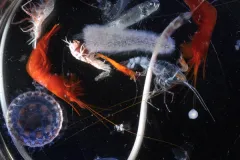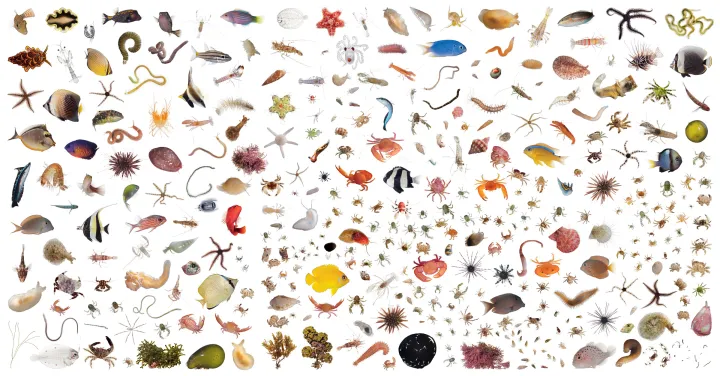One Fish, Two Fish: Estimating Undiscovered Species

My father once told me that the world is divided into two kinds of people: those who believe that the world is divided into two kinds of people and those who don’t. Wherever you come down on this particular issue, it’s clear that there is a common—if not always healthy—human impulse to classify objects into groups. In biology, this falls to taxonomists, whose job it is to classify living (and once-living) organisms into species, species into genera, genera into families, and so on. They do this not only to satisfy an impulse to classify, but also because it tells us something about the pace of evolution and the factors controlling it.
Taxonomists are an admirably careful and modest lot. Many spend a career sorting out the taxonomy of one or two groups. In recent years, however, there has been an effort to go further and say something about the total number of species within large groups like fishes or in large parts of the planet like the ocean. This effort goes beyond traditional taxonomy: it asks about species that have not yet been discovered.
Surprisingly, even the number of species in the ocean that have already been identified is uncertain. This is because, until recently, no one has tried to systematically catalogue the many thousands of papers, monographs, and other reports stashed in labs and libraries around the world—some quite hard to find—that describe new species. One benefit of the effort to estimate the total number of species in the ocean has been a move to consolidate these records into databases like the World Register of Marine Species (WoRMS) that now contains around 226,000 species names (excluding bacteria, viruses, and archaea). But how can the number of undiscovered species be estimated?
One approach is based on the species-area curve, which summarizes how the number of species in a region increases with the area of the region. By seeing how species accumulate as the area covered by taxonomic surveys increases, biologists can make estimates about how many species are in a region with an area as large as the ocean. A big problem with this approach is that the total area covered by taxonomic surveys is a miniscule part of the ocean, and thus different prediction methods can give vastly different answers.
Another popular approach uses the way in which species discoveries accumulate with time to estimate future discoveries. For some groups, like marine mammals, the discovery rate has fallen off rapidly and perhaps not that many more species remain undiscovered. However, for other groups, such as invertebrates, the discovery rate has actually increased steadily over time, so an estimate based on this ever-increasing rate is essentially infinite. But this method has a more fundamental problem: the discovery record on which this approach is based is the product of human activity, not some natural process.
In rough terms, estimates of the number of undiscovered species in the ocean range from a few hundred thousand (Editor's Note: such as a recent estimate, involving NMNH scientists) to more than 10 million. My own preference is for the high side as, every time you look in a new part of the ocean, you almost always find many new species.
Editor's Note: Learn about the Census of Marine Life: a 10-year project where scientists from around the world tried to discover and catalogue as many ocean species as possible—discovered or undiscovered—and estimated the amount of work still to be done.


